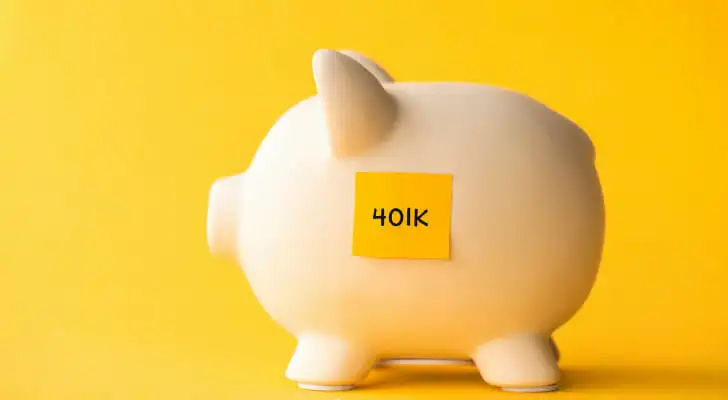A 401(k) plan, and other workplace retirement plans like a 403(b) plan, is the most common way for American workers to save for retirement. With Social Security simply not enough to cover expenses for most people and traditional pension plans rarely used anymore outside of the public sector, taking full advantage of your 401(k) is essential for those who want to be able to retire and enjoy their golden years. Part of taking full advantage is using any and all employee match that is offered, but a recent study found that many workers are simply not doing that.
How Many Workers Aren’t Using Employee Match?
According to a recent study from Vanguard, around 48% of 401(k) plan participants saved above their employee match in the calendar year, while 18% saved exactly at it. That leaves 34% of participants, around one-third of Americans using a 401(k) plan, saving below the employee match offered by their employer — essentially leaving free money on the table.
The number does look a little better after three years of annual increases to the percentage of salary saved — whether through automatic enrollment in auto-increases or voluntarily signing up for annual increases. After three years of such increases, 59% of participants are saving above the employer match level, and 16% are saving exactly at it, leaving 25% of all participants forgoing matching dollars from their employer.
Employer Match Defined

Employee match is a perk some companies offer their employees who choose to enroll in the company’s 401(k) plan. In essence, the company agrees to match an employee’s contributions to his plan account, up to a certain percentage of each paycheck. Companies offer this as a perk to try to attract high-quality employees and keep them happy.
There are a number of ways employee match can work. The simplest is a straight dollar-for-dollar match. Let’s say an employee earns $1,000 each pay period and saves 3%. That comes to savings of $30. If the employer offers a 3% match, the company would also contribute $30, for a total of $60 saved each pay period.
A match can also be more complex. For instance, a company may offer a 50-cents-on-the-dollar match. Let’s say a company offers $0.50 per dollar up to 10%. A participant earns $1,000 per pay period and saves 10%, which comes to $100 per pay period. With this match, the company would contribute $50 for a total savings of $150. This style of match is often used to encourage employees to save more while not committing the company to an unsustainable match.
An employee match may also have a vesting date. This means that in order to keep the money given to you from the match, you have to work at a company for a certain amount of time. If you leave before that time period, you’d get to keep the money you contributed but not the money matched by your employer.
Employer Match Long-Term Impact

While missing $30 or $50 per pay period may not sound like much, in the long run employees who don’t take advantage of their full company match are losing out on significant money. Here’s an example to show just how much using SmartAsset’s free 401(k) calculator.
Let’s say Roger works at XYZ Widget Co., which offers an employee match at a dollar-for-dollar rate up to 5%. Roger earns $100,000 per year before taxes. Assuming a 4% rate of return on savings, if Roger contributes 3% to his 401(k) annually, he’ll have $228,831 in his account by the age 66. That’s including employee match on that 3% he contributes.
If Roger contributes 5% of his annual salary, though, his total savings by the age of 66 jumps to $381,386 (again assuming a 4% rate of return on his savings), leaving him with more than $150,000 additional dollars to work with when planning his retirement.
Not topping off the full match rate when contributing to a 401(k) prevents retirement savers from taking full advantage of compound interest over time and ending up with much less money in their nest egg to use after their careers.
The Bottom Line
There’s another term for employer 401(k) match: free money. It’s a chance to get more money from your employer on top of your normal salary, all of which is invested tax-free and put aside for your retirement. If you can afford it, saving at least as much as your employer will match should be a no-brainer for anyone concerned with retirement savings.
Retirement Savings Tips
- A financial advisor can help you plan your retirement savings strategy. SmartAsset’s free tool connects you with financial advisors in your area in five minutes. If you’re ready to be matched with local advisors, get started now.
- One key aspect of planning for retirement is knowing how much you’ll need to sustain your lifestyle once you’re done working. SmartAsset’s free retirement calculator can help you can an idea of how much money you need to save.
Photo credit: ©iStock.com/solidcolours, ©iStock.com/pixelfit, ©iStock.com/fizkes
